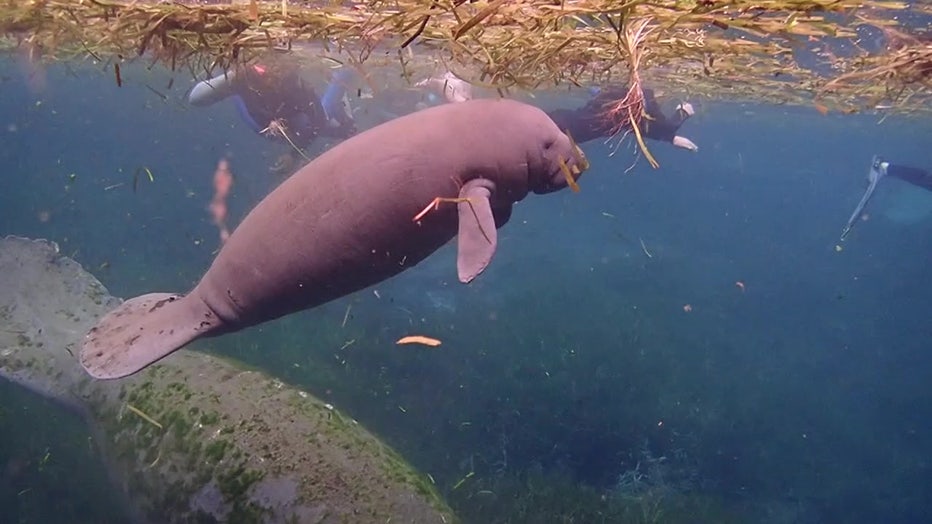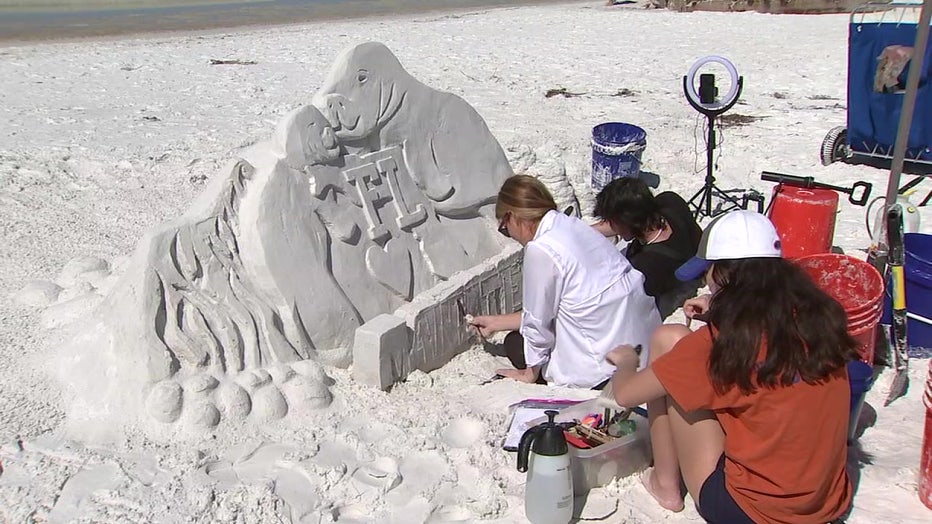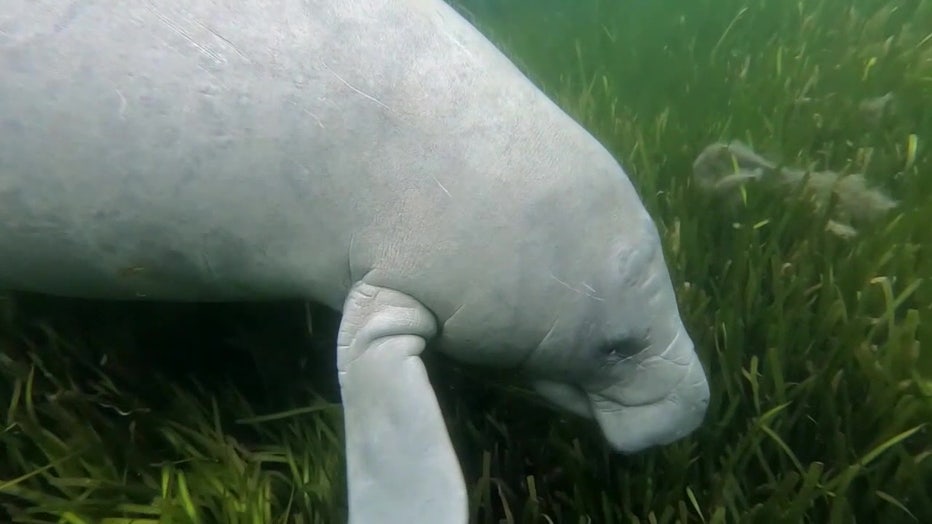How Hurricane Ian impacted Florida manatees
Manatee Awareness Month
The Ocean Conservancy kicked off Manatee Awareness Month by unveiling a special sand sculpture on Siesta Key.
ST. PETERSBURG, Fla. - November is Manatee Awareness Month in Florida, and the peaceful sea cow is entering an important time of year when its survival depends on humans.
Last year, more than 1,000 manatees died due in part to the loss of their main source of food, seagrass.
The largest contributor to the loss of that seagrass was algae blooms which are supported by the nutrient-rich freshwater runoff from inland and coastal areas.
"We know in Florida over the last two years, we've lost 24% of our manatee population," shared J.P. Brooker, director of Florida Conservation for Ocean Conservancy. "In 2022 alone, as of October 21, we've lost 719. Manatees are dying because they're starving to death, they starve to death because our waterways are compromised."
READ: TECO's Manatee Viewing Center is an opportunity to spend quality time with beloved sea cows
The main waterways that manatees live in Bay Area rivers and coastal areas where seagrasses grow. Those areas were directly impacted in September as a natural disaster struck the state.

November is Manatee Awareness Month in Florida.
"Hurricane Ian was a major rainmaker, it was a major nutrient input source for nitrogen and phosphorus," said Brooker.
Those nutrients are from fertilizers from commercial and residential lawns and ornamental plants. Heavy rain and flooding events flood those areas washing the fertilizers into the rivers and canals that flow to the Gulf and Atlantic.
READ: ‘Oh my gosh!’: Curious golden retriever in Alabama spooks manatees — and herself
NASA photos showed the heavy freshwater runoff following Hurricane Ian.

A woman from Lee County, who saw Hurricane Ian's impact first-hand, created a manatee sand sculpture to bring attention to the plight of the manatee.
We can’t prevent a hurricane from hitting Florida, but there are ways that Floridians can help after a storm.
"We need consistent efforts in restoration to try to bring back seagrass resources and our seagrass meadows coast-wide," Booker said. "You would have to replant two acres of seagrass to approximate the services of one acre of seagrass in the wild. It's not just a matter of replanting and restoring habitat, it's also preserving the native seagrass that we still have and that's going to be done by making sure we keep nutrients out of the water and we reduce the impacts of these harmful algal events."
READ: Florida officials: Starvation threat not over for manatees
Bay Area cities and counties along the coast have fertilizer bans in effect in the summer months from June 1 through September 30. That helps to remove the nutrient source during the rainy season.

Hurricane Ian caused heavy rains that washed fertilizers and nutrients in the waterways where manatees live.
"We can't really afford to lose many more (manatees). Manatees really are the canary in the coal mine for a lot of Florida's water quality problem," Brooker stated. "Florida is home to manatees so there's no migration. They live in Florida, that's where they want to be."
Residents want manatees here too.
Brooker admitted, "We as Floridians love manatees."
LINK: Learn more about the Ocean Conservancy here.

